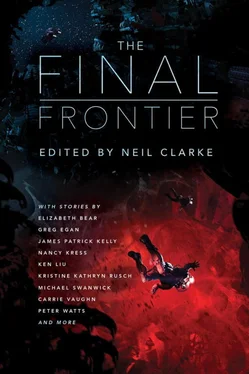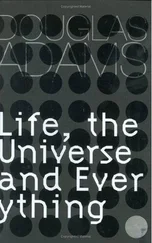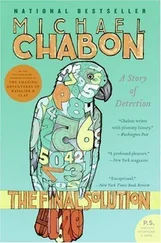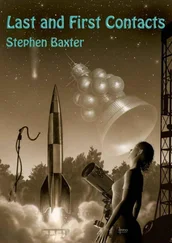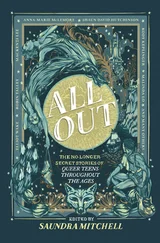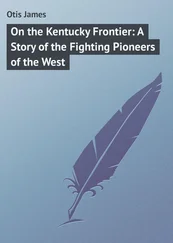Our feet slide out from under us, not like those of a fawn slipping on ice, but like those of an astronaut trainee rising from the floor of an aircraft plunging to create a few seconds of pedagogical zero-g.
The AG generators here shut down a while ago, so we dog-paddle in water-wheel slow-motion, unsure which tunnel to enter.
Actually, I’m the only uncertain trekker, but because neither Minister T nor Larry nor Kilkhor wants to help me, I stay mute, from perplexity and pride: another black mark, no doubt, against my lottery chances.
Ahead of us, fifteen yards or so, a snow leopard manifests: a four-legged ghost with yellow eyes and frost-etched silver fur. Despite the lack of gravity, it faces us as though it were standing on a ledge and licks its sooty beard as if savoring again the last guinea-pig-like chiphi that it crushed into bone bits. I hesitate. The leopard swishes its tail, turns, and leaps into a tunnel that I would not have chosen.
Kilkhor laughs and urges us upward into this same purplish chute. “It’s all right,” he says. “Follow it. Or do you suspect a subterfuge from our spiritually elevated hosts?” He laughs again… this time, maybe, at his inadvertent nod to the Christian sacrament of communion.
Larry and I twig his mistake, but does anybody else?
“Come on,” Kilkhor insists. “They’ve sent us this cool cat as a guide.”
And so we follow. We swim rather than walk, levitating through a Buddhist rabbit hole in the wake of an illusory leopard… until, by a sudden shift in perspective, we feel ourselves to be ‘walking’ again.
This ascent, or fall, takes just over an hour, and we emerge in the courtyard of Jokhang Temple, or its diminished Kalachakra facsimile. Here, the Panchen Lama, the Abbess of U-Tsang’s only nunnery, and a colorful contingent of Yellow Hats and other monks greet us joyfully. They regale us with khata, gift scarves inscribed with good-luck symbols, and with processional music played by flutes, drums, and bells. Their welcome feels at once high-spirited and heartfelt.
The snow leopard has vanished. When we broke into the courtyard swimming like ravenous carp, somebody, somewhere, stopped projecting it.
So let the gold-urn ceremony begin. Put me out of, or into, my misery.
But before the lottery, we visit the shrine where the duded-up remains of Sakya Gyatso lie in state, like those of Lenin in the Kremlin or Mao in the Forbidden City. Although Sakya should not suffer mention in the same breath as mass murderers, nobody can deny that we have preserved him as an icon, just as the devotees of Lenin and Mao mummified them. And so I must trust that a single Figure of Peace weighs more in the karmic-justice scales than does a shipload of bloody despots.
Daddy begs off. He has seen the dead Sakya Gyatso before, and traveling with his ex-wife, the mother of his Soul Child daughter, has depressed him beyond easy repair. So he retreats to a nearby guesthouse and locks himself inside for a nap. Ian Kilkhor leaves to visit several friends in the Yellow Hat gompa with whom he once studied; Minister T, who has often paid homage at the Twenty-first’s bier, has business with Lhundrub Gelek and others of the confirmation troupe who met with me in Kham in the shadow of the Yak Butter Express.
So, only Mama, Larry, and I go to see the Lama whom, according to many, I will succeed as the spiritual and temporal head of the 990 Tibetan colonizers aboard this ship. The shrine we approach does not resemble a mausoleum. It sits on the courtyard’s edge, like an exhibit of amateur art in a construction trailer.
Two maroon-clad guards await us beside its doors, one at each end of the trailer, now graffitified with mantras, prayers, and many mysterious symbols—but no one else in U-Tsang Bay has come out to view its principal attraction. The blousy monk at the nearer door examines our implanted, upper-arm IDs with click-scans, smiles beatifically, and nods us in. Larry jokes in Tibetan with this guy before joining us at the DL’s windowed bier, where we three float: ghosts beside a pod-lodger who will not again arise, unless he has already done so in yet another borrowed boy.
“He is not here,” I say. “He has arisen.”
Larry, who looks much older than at his last brief up-phase, laughs in appreciation or embarrassment: the latter, probably.
Mama gives me a blistering ‘cool-it’ glare.
And then I gaze upon the body of Sakya Gyatso. Even in death, even through the clear but faintly dusty cover of his display pod, he sustains about his face and hands a soft amber aura of serene lifelikeness that startles, and discomfits. I see him smiling sweetly upon me when I was four. I imagine him displeasing his religious brethren and sisters by going more often into Amdo and Kham Bays to interact with his secular subjects than our sub-lamas thought needful or wise, as if such visits distracted him from his obligations and undercut his authority in both realms, profane and holy. And it’s definitely true that his longest uninterrupted sojourn in U-Tsang coincides with his years lying in state in this shabby trailer.
Commoners aboard ship loved him, but maybe—I reflect, studying his corpse with both fascination and regard—he angered those practitioners of Tantra who viewed him as their highest representative and model. Certainly, he moved during his life from external Kalachakra Tantra—a concern with the lost procession of solar and lunar days—to the internal Tantra, with its focus on the energy systems of the body, to the higher alternative Tantra leading to the sublime state of bodhichitta, perfect enlightenment for the sake of others.
Thus reflecting, I cannot conceive of anyone aboard ever wishing him harm or of myself climbing out of the pit of my ego to attain the state of material renunciation and accepting comprehension of emptiness that Sakya Gyatso reached and embodied through so many years of our journey.
That I stand today as one of two Soul Children in line to follow him defies logic; it offends reason and also the 722 deities resident in the Kalachakra Mandala as emblems of reality and consciousness. I lack even the worth of a dog licking barley-cake crumbs from the floor. I put my palm on the Twenty-first’s pod cover and erupt in sobs. These underscore my unsuitability to succeed him.
Mama’s glare gives way to a look of fretful amazement. She lays an arm over my shoulder, an intimacy that keeps me from drifting blindly away from either her or Larry.
“Kiddo,” she murmurs, “don’t cry for this lucky man. We’ll never cease to honor him, but the time for mourning has passed.”
I can’t stop: All sleep has fled and the future holds only a scalding wakefulness. Larry lays his arm over my other shoulder, caging me between them.
“Baby,” Mama says. “Baby, what’s going on?”
She hasn’t called me ‘baby’ or ‘kiddo’ since, over seven years ago, I had my first period. I twist my neck just enough to tell her to glance at the late DL; that she must look. Reluctantly, it seems, she does, and then looks back at me with no apparent hesitancy or aversion. Her gaze then switches between him and me until she realizes that I won’t—I simply can’t—succeed this saint as our leader. Moreover, I intend to withdraw from the gold-urn lottery and to throw my support to my rival. Mama remains silent, but her arm deserts me and she turns from the DL’s bier as if my declaration has acted as a vernier jet to change her position. In any case, she drifts away.
“Do you understand me, Mama?”
Mama’s eyes jiggle and close. Her chin drops. Her jumpsuit-clad body floats like that of a string-free marionette, all raw angles and dreamily rafting hands.
Larry releases me and swims to her. “Something’s wrong, Greta Bryn.” I already suspect this, but these words penetrate with a laser’s precision. I fumble blurry-eyed after Larry, clueless about what to do to help.
Читать дальше
